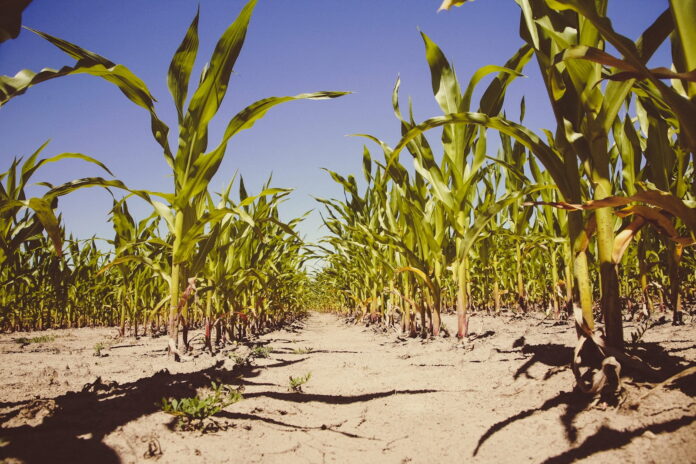Soil erosion is a natural process that can be significantly accelerated by human activities such as deforestation, overgrazing, and improper agricultural practices. It involves the removal of the topsoil, which is the most fertile layer, by wind, water, or ice. The environmental impact of soil erosion is profound: it reduces agricultural productivity, degrades soil quality, leads to sedimentation in waterways, and contributes to loss of biodiversity. Annually, about 75 billion tons of soil are eroded from the world’s terrestrial ecosystems, with an estimated global economic loss of $400 billion.
The consequences of soil erosion extend beyond the immediate loss of soil. It can cause a decline in organic matter and nutrients, disrupt water cycles, and increase the risk of floods and landslides. In agricultural landscapes, erosion can lead to reduced crop yields and increased need for fertilizers and pesticides, which can further harm the environment. Understanding the environmental impact of soil erosion is crucial for developing effective strategies to prevent and mitigate its effects.
The Role of Vegetation in Soil Stabilization and Erosion Control
Vegetation plays a pivotal role in soil stabilization and erosion control. Plant roots anchor the soil, reducing its susceptibility to being washed or blown away. The canopy of vegetation also intercepts raindrops, diminishing the force with which they strike the soil and therefore reducing the potential for erosion. Furthermore, vegetation contributes organic matter to the soil, enhancing its structure and water retention capacity.
Afforestation, reforestation, and the establishment of cover crops are common practices that utilize vegetation for erosion control. For instance, planting trees on slopes can significantly reduce landslide risks, while cover crops can protect agricultural land during off-seasons. Grassed waterways and buffer strips along the contours of fields can trap sediment and reduce surface runoff. These vegetative measures not only prevent erosion but also provide habitats for wildlife, contributing to ecological diversity.
Building Barriers: Using Terracing and Retaining Walls to Prevent Erosion
Terracing and retaining walls are physical structures that can effectively prevent soil erosion on slopes. Terracing involves creating a series of flat platforms or steps on a slope, which reduces the velocity of water runoff and allows more water to infiltrate the soil. This ancient technique has been used for centuries in various parts of the world, such as the rice terraces in the Philippines, which are not only functional but also a testament to human ingenuity in landscape management.
Retaining walls, on the other hand, are more rigid structures that hold back soil and rock from downslope movement. They can be constructed from various materials, including stone, concrete, and timber. Living walls, which incorporate vegetation into the structure, provide additional benefits by enhancing stability through root systems and improving aesthetics. Both terracing and retaining walls can be integrated into the landscape to create productive and sustainable land use systems.
Harnessing the Power of Mulching and Ground Cover for Soil Protection
Mulching is a simple yet effective technique for soil protection. It involves covering the soil surface with organic materials such as straw, leaves, or wood chips. This layer protects the soil from the erosive forces of rain and wind, conserves moisture, and suppresses weed growth. As the mulch decomposes, it adds valuable organic matter to the soil, improving its structure and fertility.
Ground cover plants, such as clover or creeping thyme, can also protect the soil. These low-growing plants form a dense mat that shields the soil from erosion while providing habitat for beneficial insects. Ground covers can be used in orchards, vineyards, and ornamental gardens to enhance soil health and reduce maintenance needs. Both mulching and ground cover are cost-effective and environmentally friendly methods of soil protection that can be easily adopted by farmers and gardeners alike.
Innovative Erosion Control Techniques: Bioengineering and Natural Fiber Mats
Bioengineering is an innovative approach that combines biological and engineering principles to control erosion. Techniques such as live staking, where live cuttings of certain plant species are inserted into the soil, can stabilize stream banks and slopes. These cuttings eventually sprout roots and shoots, reinforcing the soil matrix. Another bioengineering method is the use of coir logs—cylindrical rolls made of coconut fiber – that are placed along contours or stream banks to reduce erosion and promote vegetation growth.
Natural fiber mats, made from materials like jute, coir, or straw, are another sustainable option for erosion control. These biodegradable mats are laid over vulnerable soil surfaces to protect them from erosion while allowing plants to establish. They are particularly useful in areas where vegetation alone is insufficient to prevent erosion, such as on steep slopes or in regions with heavy rainfall. These innovative techniques not only prevent soil loss but also enhance the ecological value of the landscape.
Water Management Strategies: Contouring and Rainwater Harvesting to Combat Erosion
Contouring is a water management practice that involves plowing or planting along the natural contours of the land. This method creates natural barriers to water flow, reducing runoff velocity and encouraging water infiltration. Contour plowing can significantly reduce soil erosion on sloped agricultural land and is often combined with strip cropping for added effectiveness.
Rainwater harvesting is another strategy that can mitigate erosion by capturing and storing rainwater for later use. This reduces the volume and speed of runoff during storms, which can otherwise lead to severe erosion. Rainwater harvesting systems can range from simple rain barrels to more complex structures like ponds or swales. By managing water effectively, these strategies not only prevent erosion but also conserve water resources and enhance the resilience of ecosystems to climate variability.
Ecological methods of soil protection and erosion prevention are diverse and can be tailored to suit different environments and land-use practices. By understanding the environmental impact of soil erosion and implementing strategies that harness the power of vegetation, build barriers, utilize mulching and ground cover, employ innovative techniques, and manage water wisely, we can protect our soil resources and ensure a sustainable future for our planet.
